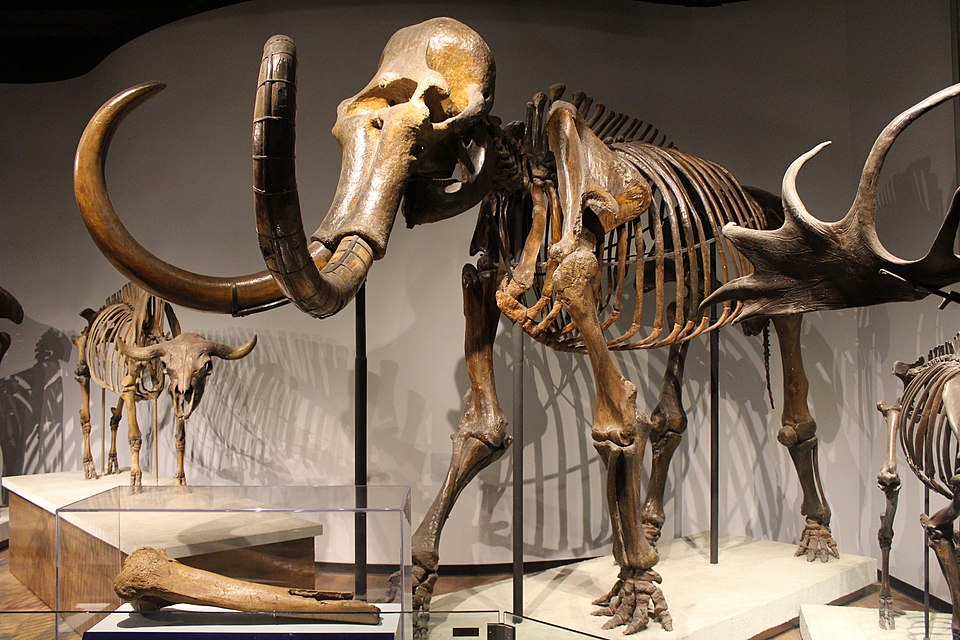How Much of the Past Should We Bring Back to Life?
Advances in technology make the reconstruction of the past increasingly realistic. However, as archaeology has learned, bringing back the past is never as straightforward as it seems.
There is an incredible amount of scientific effort put toward understanding the past and bringing some of it back to life. Everyone agrees it’s nice to have some old structures around—like the pyramids at Giza and the Great Wall of China—but what about the living creatures we once lived alongside? With recent advances in genetic technology, de-extinction may be a possibility—but should we be doing it?
Several scientific disciplines are currently geared specifically to provide us with realistic insights into what life would have been like in the past. Archaeology in particular has rank after rank of specialists tuned toward reconstructing the built environment—monuments, houses, caves, and even whole towns—and the ways people would have lived in those environments. We conduct these experiments to understand the choices our species has made as we evolved into the cultures and societies that exist today, and we conserve the walls and temples of our pasts because they mean something to the people who visit them.
We have highly trained conservators who carefully rebuild, brick by brick, the great Mesopotamian temples of 5,500 years ago (alongside conservators who are not as well-trained but whose good intentions outstrip their abilities, as seen with the case of the Ecce Homo reconstruction in Borja, Spain). There are also an extraordinary number of experimental archaeology projects aimed at unraveling even the most intangible mysteries of the past—helping us see that the beautiful Paleolithic art in caves like Lascaux may have been an early form of animation when seen under a torch, or that making some stone tools requires special cognitive abilities.
Advances in technology make the reconstruction of the past increasingly realistic. But what if we could recreate the living environment of our evolutionary past? What if we could bring back species that haven’t been seen since the last Ice Age?
This is exactly the question that a major new research effort is asking. The Colossal project is a private enterprise that wants to use advances in genetics to attempt the “de-extinction” or “resurrection” of an iconic Ice Age animal: the woolly mammoth. De-extinction has certainly grabbed imaginations (not to mention headlines), but as research funding is squeezed by economic conditions around the globe, scientists must ask themselves: what will this achieve?
For Colossal, there are clear benefits. There is the wow factor of creating a cold-adapted elephant that has not existed for thousands of years, and of course, there is the potential of developing new and, possibly, incredibly lucrative bioscience tech based on modifying genetics. Perhaps these technologies could save animals from extinction and bring back the past, even if many scientists are concerned about the prospect due to ethical and technical reasons.
However, as archaeology has learned, bringing back the past is never as straightforward as it seems. Something as obvious as preserving 1,000-year-old ruins for future generations to marvel at becomes less clear-cut when future generations might need to build their own monuments and walls (or even just roads). How much of the past should we bring back? The debate over how much of the Stonehenge prehistoric landscape should be sacrificed to build a tunnel for one of the most congested roads in England has shown that even trained professionals can’t agree on what is “enough” of the past to save.
This makes for some tricky questions for those who want to rebuild and recreate the past. What will happen if we really do succeed in the ‘de-extinction’ of a woolly mammoth—an animal that will be born alone into a world that it is not adapted to? Will it help us save the elephants that are under threat today? Colossal is putting a lot of effort into elephant conservation, but how will creating a genetically cold-adapted elephant address the habitat loss that has led our big-bodied species to face extinction? Would we be better off spending our research efforts on recreating the environments of the past, or the charismatic animals who once roamed them?
What parts of the past to preserve—and which to leave behind—remains a complicated tangle of ethical, practical, and even philosophical quandaries. The toppling of a historic statue of a slave trader into Bristol harbor in 2021 by outraged citizens is a clear example of how governments, citizens, and professionals are still grappling with how we bring the past into the present. As technology advances, we will be confronted with even thornier issues—like the ethics of bringing animals or even people back to life. If we cannot agree on the morality of preserving the past as a cold metal statue, how will we resolve the question surrounding the consequences of bringing something that lives and breathes back into the world?



